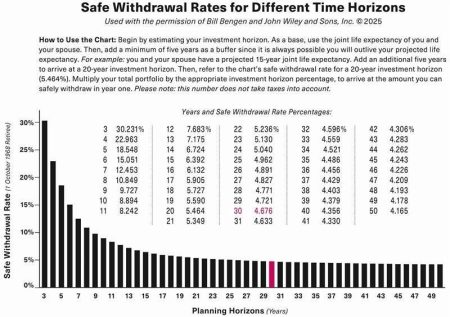“H.R. 3467, To amend title XVIII to reform the Medicare Advantage program,” was introduced on May 15, 2025. This bill would automatically enroll millions of people into a Medicare Advantage plan they didn’t choose and then lock them there for three years. While H.R. 3467 hasn’t gone far (yet), the fine print deserves your attention.
Here are the two significant provisions in this proposed legislation.
1. Automatic Enrollment into Medicare Advantage.
Beginning January 1, 2028, anyone entitled to benefits under Part A and enrolled in Part B will be enrolled automatically into the Medicare Advantage plan with the lowest premium that is available. If there are multiple lowest-cost premium plans available, the Secretary will determine a method for choosing the plan. After being enrolled automatically, there will be an opportunity to opt-out.
This proposal would likely apply to anyone who is newly eligible for Medicare: those before age 65 because of disability, at age 65 during the Initial Enrollment Period, or after age 65 when retiring.
Some of these individuals might think automatic enrollment is great. They are overwhelmed by the entire Medicare process and just want someone else to make the decisions. However, the freedom to choose a plan is very important for four reasons.
Networks
Plans have different networks. Chances are the lowest cost plan could lock one into a network that does not include the enrollee’s physicians. It might not provide options for coverage away from home or physician choice.
Drug coverage
Focusing just on premiums does not take into consideration an individual’s unique drug regimen. Plans decide which drugs to cover and pharmacies to include in-network. What if the plan doesn’t cover all prescribed medications? What if a pharmacy is out of network?
Costs
It seems the one thing that lowest premium plans have in common is no premium. Beyond that, cost sharing for services and out-of-pocket maximums can vary considerably.
Benefits
One of the big selling points for Medicare Advantage is offering benefits not covered by Medicare. But again, every plan is different. Some enrollees focus on dental services, others on gym memberships. The lowest premium plan may not offer what they want.
There’s little doubt that automatic enrollment in the lowest-cost premium plan could lead to coverage and cost issues.
But this bill offers an opt-out opportunity so why worry? There is reason to worry because chances are the individual may not opt out. They forget, don’t know how to do it, or it’s just too much work. One example: A report on the NIH website notes that only 16% of low-income-subsidy drug plan enrollees opted out of the drug plan chosen for them. That means 84% did nothing, even though they had the opportunity.
Another example: In today’s Medicare world, those receiving Social Security benefits before age 65 are enrolled automatically in Part A and Part B. They must keep Part A but not Part B if they don’t need it. Their Medicare card includes instructions to decline Part B before the effective date. Over the last 10 years, I have heard from too many beneficiaries who discover they’re enrolled in Part B when they get their SSA-1099 statement in January. Then, their options to drop Part B are limited and often painful.
And, once enrolled, trying to get out of the lowest-cost premium Medicare Advantage plan may present a challenge, too. Read on.
2. Mandatory Continuous Enrollment.
I have seen a few posts about H.R. 3467. Everyone expresses concern about automatic enrollment but not one mentioned the following point.
Anyone who enrolls in a Medicare Advantage plan beginning January 1, 2028, cannot enroll in any other plan or choose to receive traditional fee-for-service Medicare Part A or Part B for a three-year-period. The reason for three years: an investment in keeping enrollees healthier.
One exception noted in the bill: This paragraph will not apply “in the case of an individual who experiences a hardship event (such as a serious illness, as specified by the Secretary).” The what, when, why, etc., of that exception definitely would need more details.
Three years in the same plan– let that soak in. No matter what changes the plan makes (networks, cost, benefits, drug coverage), the enrollee could be locked in for 1095 days. Those changes could jeopardize coverage, which would not exactly help with keeping an enrollee healthier.
Granted this is only a proposal with an effective date 30 months down the road. It’s possible that it may not even get out of the gate, so why am I fretting about it? Mainly two reasons:
- This proposed rule would legislate away an individual’s freedom of choice and control of their health care and dollars. It would lock beneficiaries into something they did not choose and might not work for them.
- I have been dealing with Medicare most of my nursing career. During that time, I’ve lived through changes that no one thought would happen but somehow snuck through the door and it has not been pretty. Beneficiaries and providers have been hurt.
It’s difficult to reconcile such a push toward Medicare Advantage, which costs Medicare more and is riddled with care denials, in this time of cost-saving and program and budget cutting. But the healthy lead-time until 2028 gives us time to steer this in a way that maintains beneficiary choice and autonomy.
What you can do.
- Track the progress of this bill. Do that by creating an account on Congress.gov here or going to the bill’s page.
- Contact your elected representatives, once the bill starts moving. Find contact information on usa.gov.
- Tell others about this.
- Pay attention. This it not a time to be asleep at the switch.
Read the full article here









